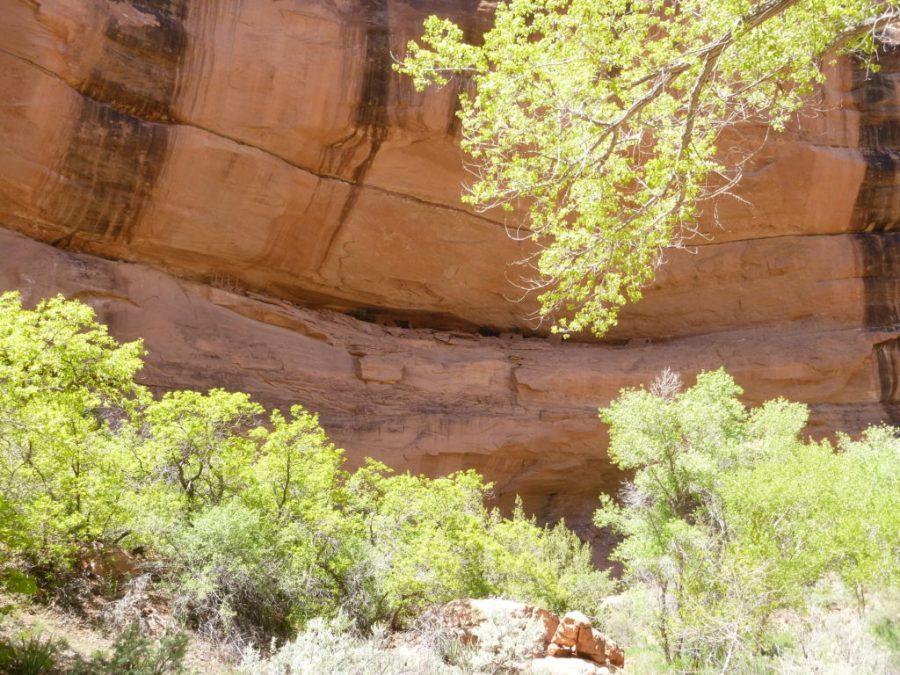Utah was recently thrust into the national spotlight following President Barack Obama’s decision to use executive powers granted in the 1906 Antiquities Act to designate Bears Ears National Monument. The monument came at the behest of the Bears Ears Inter-Tribal Coalition, a consortium of five tribal nations working to conserve the Bears Ears region. Some of Utah’s politicians, including Gov. Gary Herbert, have criticized the designation saying “the president has misused his authority.”
John Ruple, a professor whose focus is public lands at the Wallace Stegner Center for Land Resources and the Environment at the U, believes that widely-circulated myths are fueling the ongoing debate.
The monument is generally consistent with other national monument designations, however, “Where the Bears Ears monument proclamation breaks new ground is in establishing an advisory committee to provide advice on monument management,” said Ruple. This committee will include representatives of local and State government, tribal leaders, local business owners, private landowners, recreational users and other interested stakeholders.
Ranchers and miners working in the Bears Ears region have expressed concern about being denied access to the resources that sustain their careers. According to Ruple, the national monument designation won’t affect those that are already legally using the land.
“The Bears Ears proclamation withdraws federal lands within the monument from availability for future mineral development but it does not affect valid existing rights, including existing mining claims and mineral leases – those can be developed in accordance with lease terms and applicable laws and regulations,” said Ruple. “Existing laws, regulations and policies regarding livestock grazing will continue to apply.”
Utah’s School and Institutional Trust Lands Administration (SITLA) has significant land holdings within the borders of the monument — roughly 109,000 acres. In his proclamation, President Obama raised the idea of exchanging the property for other lands. Those involved with SITLA, however, are worried about losing money on the deal.
Ruple recognized that the monument could complicate SITLA’s efforts to develop their land for revenue, but indicated that he believes President Obama’s suggestion could be beneficial for SITLA, pointing to the results of the designation of Grand Staircase-Escalante National Monument. When President Bill Clinton created the monument in 1996, the Permanent School Fund received a $50 million payment along with a land exchange that was to be managed by SITLA.
Some Utah lawmakers oppose the monument because they think it is an act of federal overreach and are working to reverse the decision under a Trump administration. According to Ruple, this could only be achieved by congress.
“No national monument proclamation has ever been struck down by a court of law, and our courts have uniformly refused to second-guess a president’s determination of either the value of the resources to be protected or the appropriate size of the monument,” said Ruple. “Congress gave the president the power to create national monuments, but not to repeal them. It therefore appears that if the monument is to be undone, it will be up to congress to do so.”
Utah Sens. Mike Lee and Orrin Hatch have introduced a bill to curtail the president’s powers under the Antiquities Act, but the legislation wouldn’t affect any existing national monuments.
e.anderson@dailyutahchronicle.com



Justin • Jan 20, 2017 at 4:57 pm
This is absolutely nothing other than anti-Fed sentiment fueled with business interests who think they have some sort of ownership of the commons that _every_ American owns.
Justin • Jan 20, 2017 at 4:57 pm
This is absolutely nothing other than anti-Fed sentiment fueled with business interests who think they have some sort of ownership of the commons that _every_ American owns.
Lawrence Williamson • Jan 19, 2017 at 6:25 pm
We will be coming from North Carolina for the 3rd time in 8 years to the “Bear’s Ears” area, and are now overjoyed with its National Monument status. It is well deserved and now appropriately conserved for all Americans!
We have spent money in Monticello, Blanding, Bluff, and Mexican Hat. Get used to it!
Lawrence Williamson • Jan 19, 2017 at 6:25 pm
We will be coming from North Carolina for the 3rd time in 8 years to the “Bear’s Ears” area, and are now overjoyed with its National Monument status. It is well deserved and now appropriately conserved for all Americans!
We have spent money in Monticello, Blanding, Bluff, and Mexican Hat. Get used to it!
Larry Crutchfield • Jan 19, 2017 at 9:23 am
Grand Staircase-Escalante National Monument, created in 1996, also has a Federal Advisory Committee Act-chartered advisory committee, commonly referred to as the “MAC,” or Monument Advisory Committee. The committee is appointed by the Secretary of the Interior to advise Monument leadership. The Monument Management Plan, signed by the Secretary of the Interior in November 1999, established the committee. It’s next meeting is February 2 & 3 in Kanab, Utah.
Larry Crutchfield • Jan 19, 2017 at 9:23 am
Grand Staircase-Escalante National Monument, created in 1996, also has a Federal Advisory Committee Act-chartered advisory committee, commonly referred to as the “MAC,” or Monument Advisory Committee. The committee is appointed by the Secretary of the Interior to advise Monument leadership. The Monument Management Plan, signed by the Secretary of the Interior in November 1999, established the committee. It’s next meeting is February 2 & 3 in Kanab, Utah.